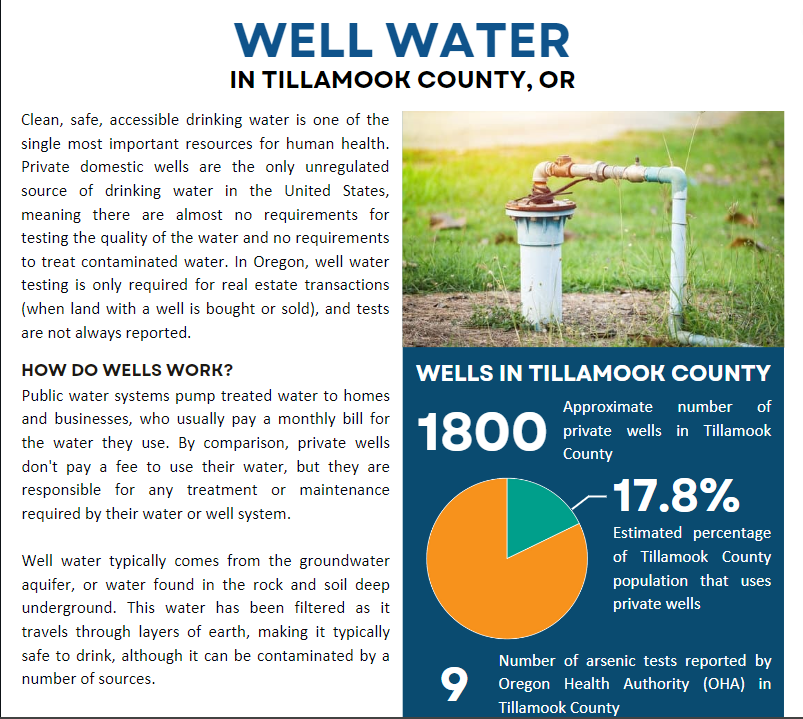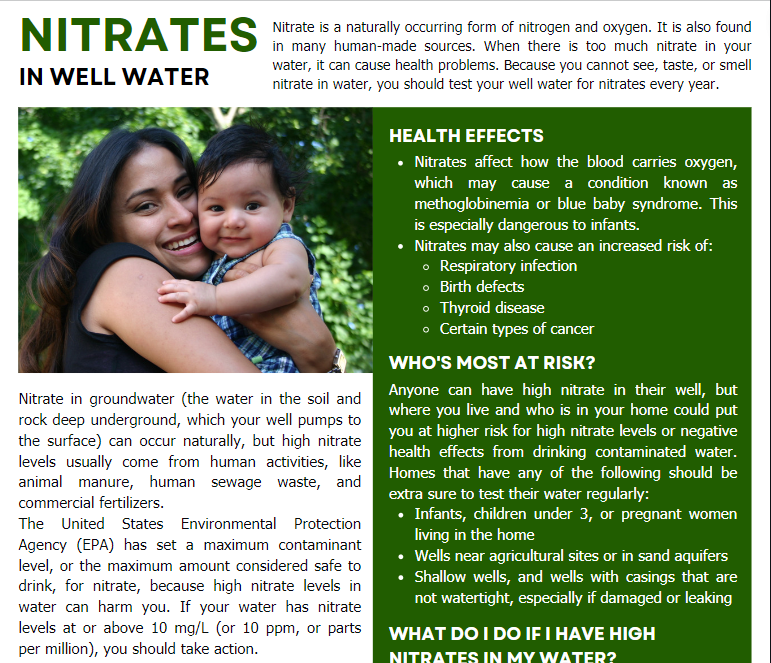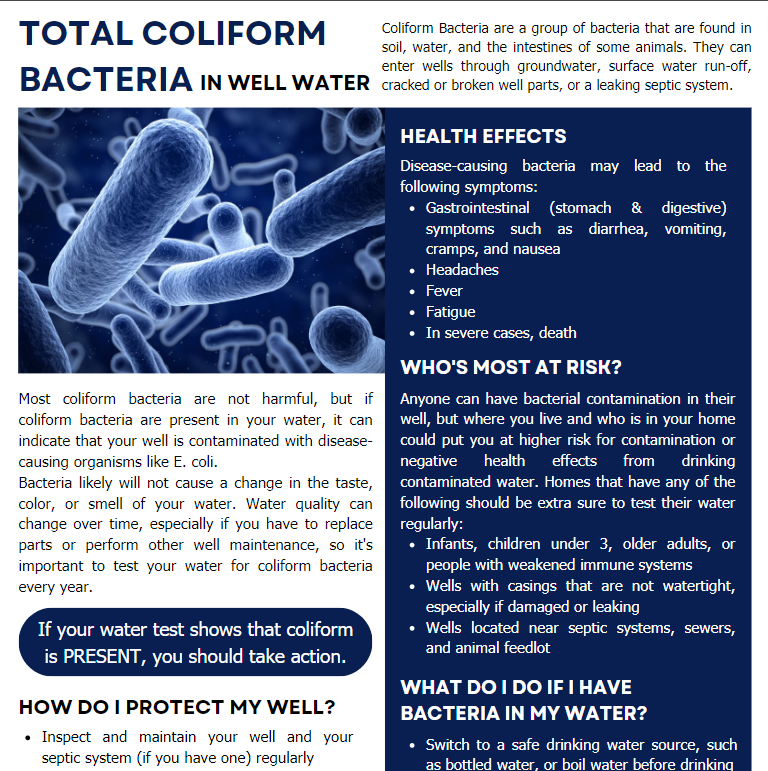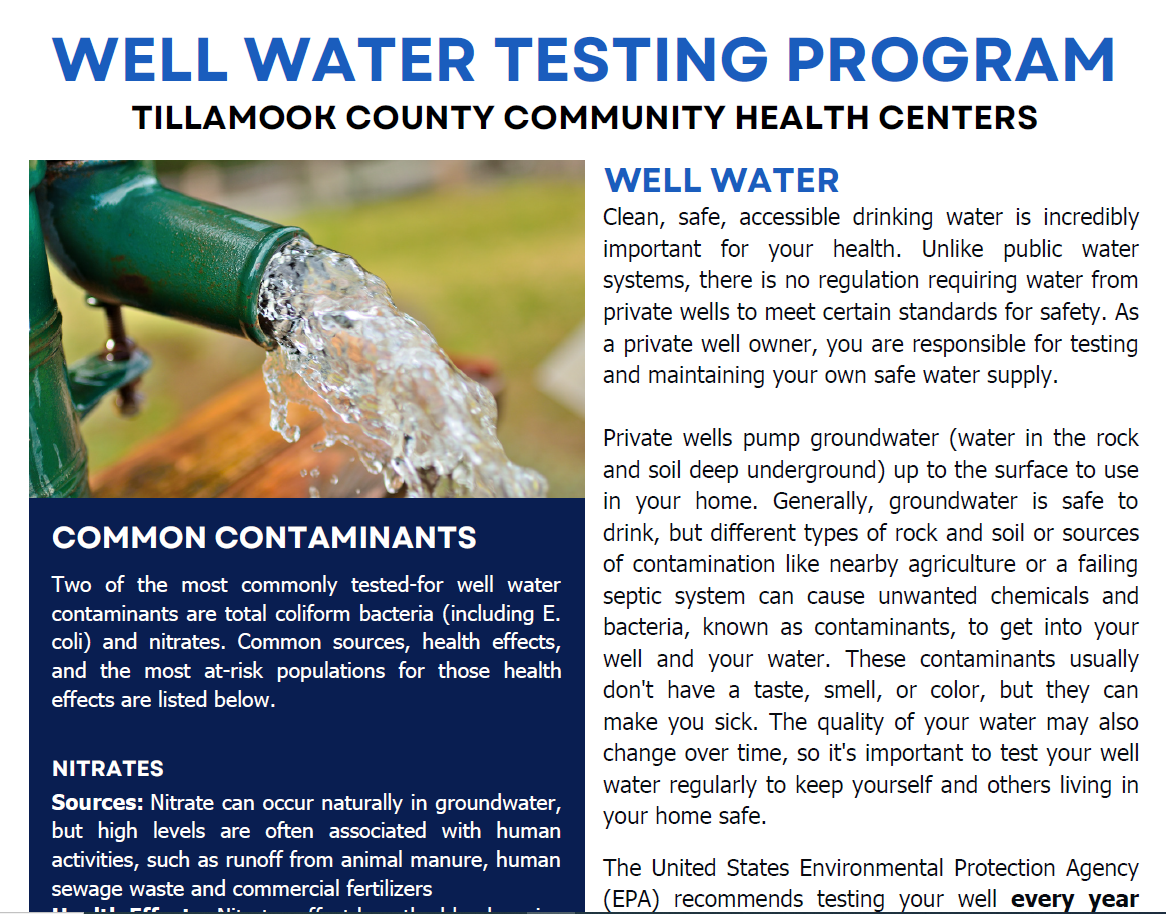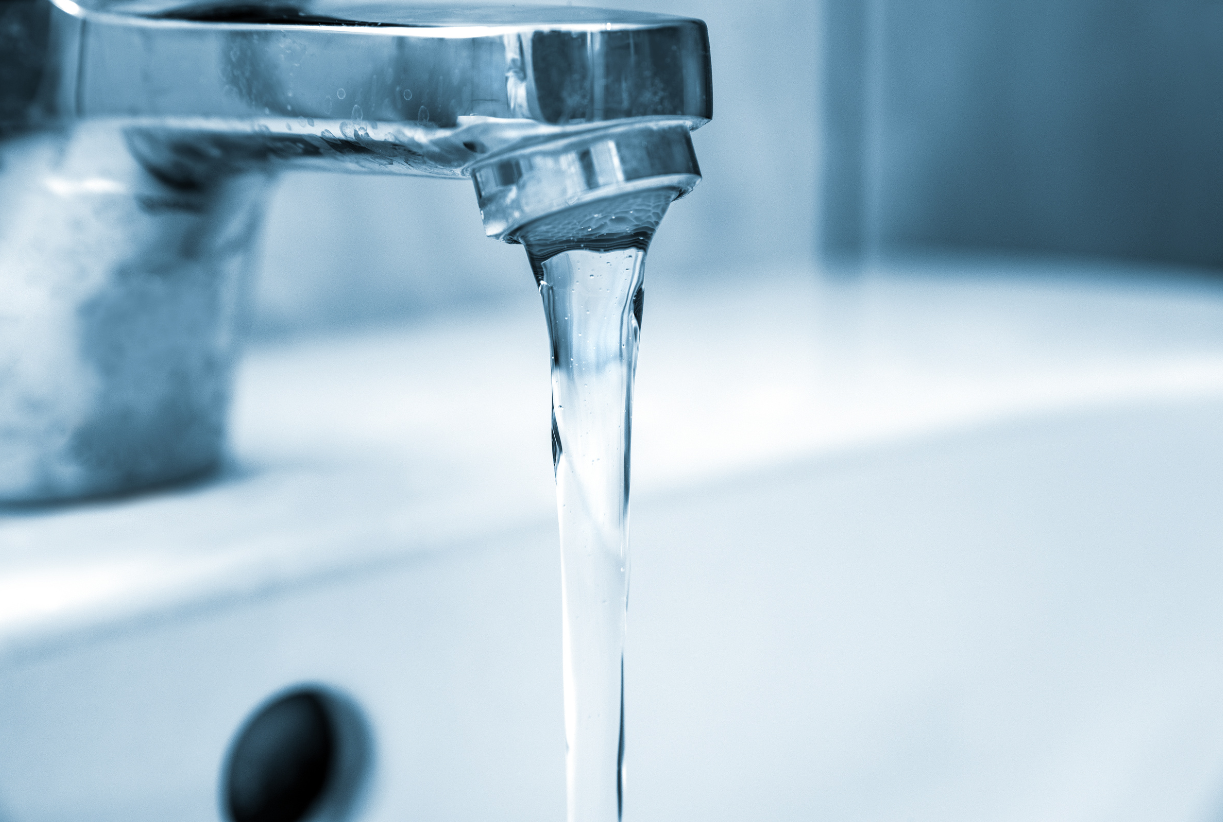Well Water
If you would like to get your well water tested, you can find accredited laboratories in Oregon HERE, or visit https://www.oregon.gov/oha/PH/HEALTHYENVIRONMENTS/DRINKINGWATER/MONITORING/Pages/labs.aspx.
For more information or questions, contact Amy McVeety at amy.mcveety@tillamookcounty.gov or 503-842-3900 ext. 4010.
If your home gets water from a private well, you are responsible for making sure your water is clean and safe to drink. The Oregon Health Authority (OHA) recommends that you:
- Test your well once per year for total coliform bacteria and nitrates
- Test your well once every 3-5 years for arsenic
- Inspect your well at least once a year, to make sure all parts of the well are tight-fitting, undamaged, and in good condition
- Keep the area around the well clear of debris and possible sources of contamination, like household chemicals or fertilizers
Well Ownership
If you’re a first-time well owner or user, thinking about building a well, or if you want to learn more about how your well works, these resources can help you get started.
-
- Oregon Health Authority Water Well Owner’s Handbook: Basic introduction to groundwater, how wells work, and how to prepare for, build, and maintain your well.
- OSU Extension Well Check List: A set of questions to help you find out what you know about your well and what you still need to learn. The OSU Extension Well Water Program website also has lots of information about well assessment and contamination.
- OHA Domestic Well Safety Program (DWSP): State information on well testing recommendations, accredited testing laboratories, and the health effects of contaminants.
- The Private Well Class: A free online class to teach well owners (or anyone who wants to learn more about wells) how to properly care for their well water. Lessons will be sent to your email once per week for 10 weeks, and many other resources are available at any time on their website.
- United States Environmental Protection Agency (EPA): Information on water quality, potential contaminants, and well testing and care from the agency that regulates public drinking water sources.
- United States Centers for Disease Control and Prevention (CDC): Information on how wells function and how they can affect your health.
- OHA Well Testing Regulations: Required testing for wells in real estate transactions.
Learn More
Use these fact sheets for quick information about wells in Tillamook County and common contaminants.
Maintenance, Testing, & Treatment
Unlike public water systems, private wells are not regulated, meaning it’s up to you to regularly check your well and water to make sure it is healthy and safe.
The U.S. Environmental Protection Agency (EPA), Oregon Health Authority (OHA), and other organizations recommend regularly testing your well water.
Most contaminants don’t have a taste, color, or smell, and well water quality can change over time. Contaminated water can harm your health, even if you don’t notice any negative effects right away. Testing is the only way to know for sure that your water is safe to drink.
Water testing laboratories in Oregon are accredited by the Oregon Health Authority. You should use an accredited laboratory to test your well water:
- At least once per year for total coliform bacteria and nitrates (the US EPA also recommends testing pH levels and total dissolved solids every year)
- Every 3-5 years for arsenic
- Immediately after any of the following:
- You learn about water quality concerns nearby
- Flooding, land disturbances, or new construction or industrial activity
- You replace or repair any part of your well
- You notice a change in the taste, smell, or color of your water
Find the list of accredited laboratories in Oregon on the OHA website here.
If you find contamination or other problems with your well, you should not drink your water until you know it is safe again. Different contaminants require different treatments, but may include shock chlorination for total coliform bacteria, removing contamination sources near the well, or installing a treatment system.
You may want to install a treatment system to make your water safe to drink and use for household activities. It’s a good idea to talk to a licensed well professional before installing any treatment, because not all treatment systems will work for every contaminant or household, and a professional can help you find the right system for your needs.
Once you start treatment, it’s important to test your water again to make sure it is now safe to drink. It’s also important to keep up with all recommended maintenance of your treatment system to make sure your water stays safe.
To learn more about the treatment options available, check out this fact sheet from the Minnesota Department of Health.
You should periodically inspect the exposed parts of your well for problems such as:
- Cracked, corroded or damaged well casing
- Broken or missing well cap
- Settling and cracking of surface seals
You should also make sure your septic system (if you have one) is working properly. Regularly check the integrity of any above ground and underground storage tanks that hold home heating oil, diesel, or gasoline on your property
If you notice any problems, you should test your water to make sure it hasn’t been contaminated. You should also talk to a drinking water professional, who can help you identify problems and find the right solution to keep your drinking water safe. To learn more about well inspection and testing, visit the OSU Extension Well Water Program website here.
Private Wells & Natural Disasters
Wells can be damaged or contaminated by natural disasters like wildfire, flooding, and drought. This can make your drinking water inaccessible or unsafe to use.
- Wildfires can severely damage well systems, meaning drinking water might not be accessible or may be contaminated.
- Extended power outages are becoming more common, especially as wildfire risk increases. When the power goes out, you may not have running water.
- Floodwater can contaminate wells and cause damage to the well system.
- Drought can decrease the amount and quality of groundwater that is available, making it more likely for your well water to be contaminated or for the well to dry up.
Being prepared means knowing your risk and having the supplies and knowledge ready to deal with disasters before they happen.
- If you think your well has been contaminated, you should stop drinking the water and use another safe source (such as bottled water) until you know it’s safe. The CDC has information on their website about how to treat a contaminated well.
- If your well has been damaged, contact a well professional for help to inspect the well, identify the issue, and find a solution to the problem.
- Try to keep enough clean water on hand to support everyone in your household (pets and other animals included) for a minimum of three days, but ideally for two weeks. The U.S. Department of Homeland Security recommends storing 1 gallon of water per person per day. To learn more about storing water, visit the Ready.gov site.
Septic Systems
Many properties that have a private well also have a septic system. If your property uses a septic system to manage wastewater, or you are not connected to a public sewer system, it’s important to keep up regular septic system inspection and maintenance. A broken or malfunctioning septic system can lead to contaminated water and other negative health and environmental effects.
To learn more about septic systems, visit the Tillamook County Community Development’s Sanitation Resources page.

